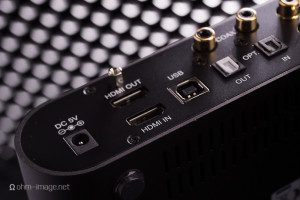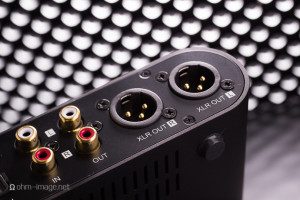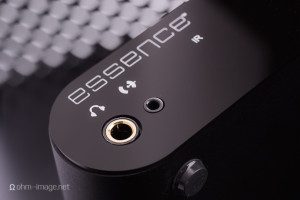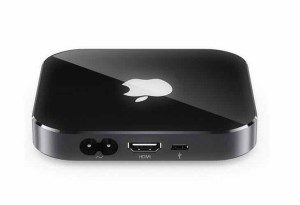
January 14, 2016…..Let me make introductions. Essence products and distribution are the lovechild of Bob Rapoport. Bob sells seriously esoteric stuff: electrostatic speakers, passive and active speakers of all shapes and sizes, DACs, and more. What’s shaking things up more than anything else at least on the blog front are his affordable DPA-440 Class D Amp and the title item of this review, the HDACC.
Basic spec
24/192 DAC (ESS9012)
Digital pre-amp with discrete volume control
digital inputs: USB 2, coaxial, optical, HDMI (v1,3)
analogue inputs: 3,5mm stereo, RCA
digital outputs: coax, optical, HDMI (v1,3)
analogue outputs: XLR, RCA, 6,3mm stereo
Emblazoned across its glossy fascia is the HDMI logo. HDMI is hard to find among audiophile DACs. HDACC’s main competition comes from NAD, among others, costing many times its price. The HDACC’s HDMI can also pass-thru digital signals to TVs and outboard DACs, which redeems sources like the new Apple TV, or cruddy TVs and monitors whose singular outputs are HDMI. All of HDACC’s inputs (RCA, 3,5mm, coaxial, toslink) pass their signals to internal ADC/DAC hardware to be spat out in any format, analogue or digital, through any port.
While it shows up as a “USB Audio 2.0” line input in Mac OS’s preference panel, it can’t digitise analogue inputs for archival to your computer. For that, you’ll need a Lynx Hilo, and Edirol, or most any mixing card. That’s the job of a Lynx HILO.
Branding
HDMI is HDACC’s biggest commercial feature. Type DAC and HDMI into Google and I’ll be damned if you won’t find something Bob sells in the first non-advertised spot. The same brute force methods apply to HDACC’s branding.
$500 is HDACC’s spiritual sweet spot.
Build
It’s  solid. Its RCA pillar-like, as solid as those found on a number of quality mid and high-end DACs and amps. Around the back, its XLR jacks lock with the correct cables, and are ringed in impact absorbent plastic. Only HDACC’s coaxial ins and outs wobble ever so slightly.
solid. Its RCA pillar-like, as solid as those found on a number of quality mid and high-end DACs and amps. Around the back, its XLR jacks lock with the correct cables, and are ringed in impact absorbent plastic. Only HDACC’s coaxial ins and outs wobble ever so slightly.
HDACC is solid and respectably built, especially considering its price and feature set.
Function
Balanced XLR, RCA, and headphone outputs. 24/192. USB, coaxial, toslink, HDMI inputs. Pass-thrus for everything. Analogue to digital and vice versa. Bingo.
Because the options are many, HDACC relies on a many-level GUI. Fortunately, it is simple. A short press of the attenuator brings up the menu, in which the following options: Source In, Line out Set, HP impedance, Display Set, HDMI TX Set, SRC Set, Return, and Reset to default are options. Rotate the attenuator to cycle through every function. Pressing the attenuator again will dig into the selected menu and open up a new set of options specific to that menu item. HDACC uses simple language, and a straightforward hierarchy. Without reading the manual, you can figure it out.
Audiophiles are going to love HDACC’s XLR line outs. They are great. High quality stuff that should stand up well in most hi-end audio systems. You’ll see me gush more about them later. The headphone output is par for the course. It’s best suited to non-sensitive headphones. We’ll get more into this later.
HDMI. Plug it in and get SPDIF out, analogue out, and even a pass-thru HDMI for downstream devices. This functionality in conjunction with a good power amplifier and you are good to go for most anything.
Performance
To its credit, HDACC keeps stable dynamic range and noise no matter the load. And, while measurable, its frequency response deviates by a mere 1dB at 5.000Hz when driving the Earsonics SM2. Respect. Plug in Oppo’s wonderful PM-2 or a DT880, however, and HDACC’s headphone amp struts its stuff. While it is slightly more detail oriented, it shares similar output power to my favourite DAC, the Lynx HILO. That is: warmish, full, with good y-axis stereo detail.
As long as you stay away from sensitive earphones and portable headphones, the HDACC has more than enough power and drive. For best performance, you’ll want to plug something in the 60Ω – 300Ω range. It’s no Mojo, but it’s got verve of its own. HDACC comes with six impedance settings: 16, 32, 64, 200, 300, 600. Noise doesn’t amplify based on the setting, and the volume jump from one to the next is meagre and studied. I’ve found no major difference in current stability from one setting to the next.
The DAC behind HDACC’s XLR outputs is brilliant. With my amateur setup, I measure 111dB of dynamic range, -111dB of noise, 0,0017% THD, 0,011% IMD, and a whopping 109,5dB of stereo separation. Channel balance is great, and the signal is both steady and flat from 20 to 20.000. They feed either a flat 4VRMS, or their voltage can be controlled by the attenuator, or included remote control, which makes them great for use straight with amps.
Which, is probably where Bob wants you to turn. Essence’s DPA-440 Class D Amp appears to fit the bill. Small, powerful, and in need of a pre-amp, the couple should work together like peas in a pod.
The point is that if you want performance, HDACC is more than capable. Its XLR output is wonderful. Its headphone out is decent. And, lo and behold, so is its front line input. That input measures -110dB noise, 109dB dynamic range, and tracks faithfully to the performance you can expect from HDACC’s XLRs. Wonderful. In other words, if your mates bring over iPods and want to listen to their tunes, both they, and you, can, in exceeding quality.
Finally, the star of the show: HDMI, is brilliant. It performs audibly as well as USB input, and passes back out so that simple Blu Ray players as well as the new Apple TV can still hook up to quality downstream audio equipment. Better yet, you can fire up HDACC with the included remote control, by which you can switch its inputs around, change volume, and mute the volume.
I should also mention that I’ve detected none of the USB-input anomalies that stymie Chord’s Mojo or ALO’s CDM, when switching USB input from iPhone to iMac.
Sound
HDACC outputs a slightly warm signal that errs toward neutrality and stereo detail. It’s not as low distortion as it gets, but it kicks up solid pre-amp/DAC performance for the price.
Because its XLR output keeps harmonic distortion and noise low, you’ll have to make sure to choose an amplifier whose noise levels are low.
While it doesn’t output signals devoid of distortion, through its headphone output, it metes out 3x less THD and IMD than Onkyo’s DP-X1 (DP-X1 RMAA) in single-ended mode. Even loaded with an Earsonics SM2, it keeps frequency deviation to within +/- 1dB, which is respectable.
Stereo balance is very good across the range, from bottom to top. Again, if for some reason you’re listening through earphones, you may find HDACC favours the upper midrange (around 5K or so), but if you’re running any normal headphones, by and large, stereo detail is even from 20Hz to 20.000Hz.
Which may be why I’m tempted to call its sound stage ‘round’. Stereo details don’t piddle out at the sides, nor are they thin. HDACC spits good y-axis depth into every headphone with which I’ve paired it.
With Apple TV
HDACC’s overall good to excellent performance, and Swiss Army bevy of connections, make it a brilliant part in a home theatre system. Not only can you pass an Apple TV HDMI signal out to it, and onto a TV, you can do the reverse and still end up with a DAC that spits great signal quality to downstream power amps.
Having lost its toslink connection, the latest Apple TV completely buggers clean wireless living room setups. Until now.
If like me, you depend on streaming devices for home entertainment, you can’t do better than HDACC for $500.
End words
My experience with HDACC has been positive. Especially for its asking price HDACC is solid. It sounds good. It plays very nice with downstream equipment and its headphone amp performs well.
It can route any analogue or digital input into any of its outputs, and is easy to use which makes it a good choice for the living room. a beautiful partner to the Apple TV.

